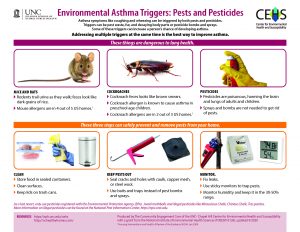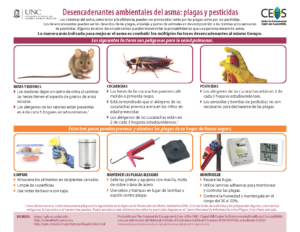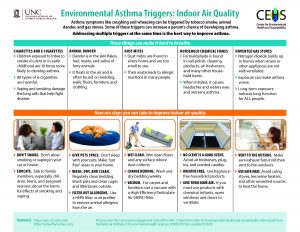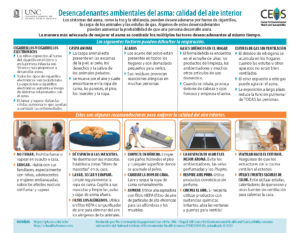Pests and Pesticides
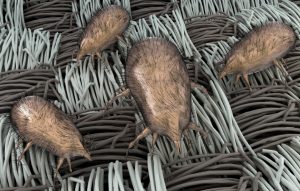 Pests enter the home when there is an ample supply of food, water, and shelter. When pesticides are used to repel pests, we are introducing toxic chemicals into our homes that are harmful to humans, pets, and wildlife.
Pests enter the home when there is an ample supply of food, water, and shelter. When pesticides are used to repel pests, we are introducing toxic chemicals into our homes that are harmful to humans, pets, and wildlife.
In our homes, pests can include:
- bed bugs
- cockroaches
- dust mites
- mice/rats
Health Effects
The presence of pests can cause disease and trigger asthma attacks and allergy symptoms. Health impacts of pesticides include eye, nose, and throat irritation, central nervous system damage, kidney damage, and risk of poisoning.
- Cockroach feces and decaying body parts are known to cause asthma in young children, especially in urban areas. Proteins found in cockroach feces and saliva can cause allergic reactions or trigger asthma symptoms in some individuals.
- Rodents like mice and rats can carry disease. Mice urine also contains a known allergen.
- Dust mites are tiny insects that feed on human skin flakes and are found in mattresses, pillows, carpets, etc. Body parts and droppings from dust mites can trigger asthma in sensitive individuals.
- Bed bugs are small (poppyseed to appleseed size) insects that infest the places where people sleep. Bed bugs are not known to carry disease but their bites can be irritating to the skin.
Links
- Dr. Bed Bug, Bed Bug resource
- NC Department of Agriculture and Consumer Services
- American Lung Association, Asthma web page
- Environmental Protection Agency (EPA), Asthma Triggers: Gain Control web page
- NY State Integrated Pest Management Program, IPM for Homes


